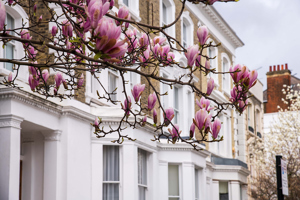Re-opening restaurants, pubs & bars: guidance
Following the government’s announcement to open up the hospitality industry, restaurants, pubs and bars continue to plan for the 4th of July and how to make their premises COVID-secure. The government has issued guidance to assist employers in their planning and whilst this guidance does not have statutory status, it will be seen as the minimum steps employers should take to comply with existing legal obligations. Some key considerations for employers and business owners are:
- Risk assessments: before reopening, all businesses must carry out a COVID-19 risk assessment. Employers must consult with the health and safety representative selected by a recognised trade union or, if there isn’t one, a representative chosen by the workers or the workers themselves to ensure their concerns are heard. The outcome of risk assessments should be published for staff to see. Guidance from the Health and Safety Executive (HSE) is available here.
- Track & Trace: Restaurants, bars and pubs are being asked to assist the NHS’s Track and Trace service by retaining a temporary record of all customer and visitor contact details for 21 days. Business owners are encouraged to utilise existing systems to support this, for example online booking processes. Further guidance is expected from the government and the Information Commissioner’s Office on how this can be done efficiently and in line with data privacy laws. Businesses should assist with NHS Track and Trace requests if received.
- Social distancing: following the government’s review, the social distancing measure has been reduced to 1m+ with risk mitigation, where 2m is not viable. Businesses should reconfigure indoor and outdoor seating to maintain these distances and account for pinch points. All contact between customers and front of house staff should be minimised where possible, with increased used of screens or barriers and hand washing. Social distancing should also be maintained for workers wherever possible in addition to using back-to-back or side-to-side, rather than face-to-face working and reducing interaction between staff by having fixed teams. Organising shifts to keep fixed teams separate will help to reduce transmission and prevent a large number of the workforce taking sick leave at any one time.
- Travel to and from premises: businesses should liaise with their landlords, neighbouring businesses and local authorities where necessary to pre-empt risks posed by public transport, car parks and outdoor queues. This may involve further staggering of customer and staff arrival times and providing additional parking spaces or bike racks where possible.
- Entering premises: queues should be managed to reduce the risk of transmission, maintaining social distancing through the use of floor markings or barriers, and queueing outdoors wherever possible. Customers should be encouraged to use hand sanitiser or handwashing facilities on arrival.
- On your premises: clear guidance should be provided for customers on social distancing and hygiene, both in advance when booking and on arrival e.g. signage and one-way systems. Special consideration should be given to busy areas such as exits and toilets. Customers should be reminded to supervise the children they accompany and their social distancing. Indoor and soft play areas should remain closed. Outdoor space should be utilised wherever possible but if effected by adverse weather, customers should not be permitted to shelter indoors if social distancing cannot be maintained. Reasonable adjustment should be made to avoid disabled workers and customers being put at a disadvantage, for example by ensuring disabled parking access. Visits from contractors and third parties should be managed to reduce interaction e.g. while premises are closed to customers. Businesses should review cleaning requirements ahead of opening as part of their risk assessment and enhance the cleaning of your venue where necessary.
- Food and Drink Service: When taking orders and payment, social distance should be maintained through table service (inside and outside) or the use of ordering apps and contactless payment where possible. Transmission should be reduced by limiting the surfaces staff and customers touch e.g. by avoiding self-service of food and cutlery, and providing disposable condiments where possible. Specific staff should be assigned to specific tables and contact between kitchen and front of house staff minimised by using food pick up points. Where bar service is unavoidable, customers should be prevented from remaining at the bar after ordering.
- Takeaway or delivery: pre-existing guidance from the Food Standard’s Agency should continue to be followed here. Customers should be encouraged to order remotely (online or by phone) and pick up times staggered. Contact between kitchen staff, front of house workers and delivery drivers or riders should be reduced as well as the surfaces they touch. Queues for customers or delivery workers should be managed by demarcating social distance or asking them to wait in their cars.
- Food preparation: kitchen access should be limited to as few people as possible and with social distancing where possible. Cleaning measures should be more stringent in areas where food is prepared or stored, with continued high frequency of hand washing. Employers may request staff uniforms be washed, and changed into, on site where social distancing and hygiene standards can be met.
- Toilets: encourage social distancing by marking queues and avoiding bottlenecks. Ensure the facilities are well ventilated. Encourage good hygiene through the use of signage and, if possible, provide hand sanitiser on entry to toilets. Increase the frequency of cleaning and the surfaces that are cleaned.
- Rules on gatherings: hospitality businesses should remain aware of rules in relation to gatherings and that local authorities have the power to enforce them. Indoors, gatherings of people from a maximum of two households (including support bubbles) are permitted. Outdoors, six or fewer people may meet from any number of households or more than six people can meet from a maximum of two households (including support bubbles). Both indoors and outdoors, gatherings must usually be of no more than 30 people and performances for live audiences such as drama, music or comedy are not yet permitted. Due to the increased risk of transmission caused by people raising their voices, loud music should not be played and staff should refrain from shouting.
- PPE: Outside of a clinical setting, the UK government advises that PPE is unlikely to be necessary if all other advice is followed. Generally other workplaces should not encourage the use of PPE which should continue to be reserved for health and care workers. If customers or workers want to wear face coverings, businesses should allow them to do so. Face coverings may form a barrier to clear communication, therefore staff should take extra care to listen and check any communication, with customers and each other, in relation to allergens and hygiene.
Key messages:
- Before opening, undertake your COVID-19 risk assessment in line with HSE guidance and consult with staff.
- Maintain a social distance of 2m and if not viable, 1m+ with risk mitigation.
- Calculate the maximum capacity of your premises and reconfigure space accounting for pinch points and busy areas.
- Utilise technology where possible such as online booking systems, apps for placing orders and contactless payments.
- Cleaning should be enhanced, especially of high-risk areas such as common touch points and where food is prepared.
- Follow government guidance in relation to takeaway and delivery services to promote social distancing and minimise contact.
- Keep toilets open to promote hygiene and manage facilities to reduce transmission risk.
- Keep up to date with rules relating to gatherings to ensure they are followed on your premises.
- PPE is only required within clinical settings.
For more information, please contact Michael Powner or your usual Charles Russell Speechlys contact.







































